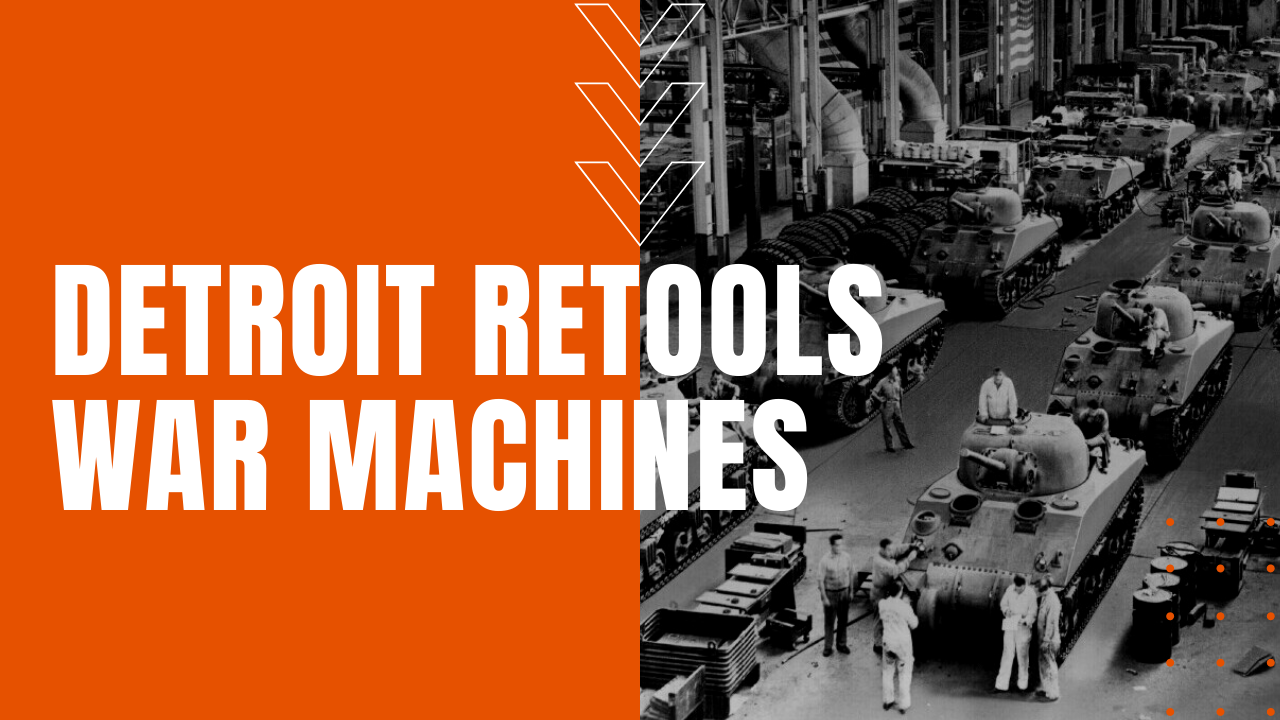Detroit Retools to Produce WWII Weaponry

When Allied troops landed at Normandy during the D-Day invasions of France, the invasion force included 50,000 vehicles of all types, well over 5,000 ships and more than twice that number in airplanes.
While many factors led up to victory in both theaters of war, one key element was the ability of American industry to outbuild Germany and Japan in the largest mechanized war the world has ever seen. Detroit automakers played a key role in the Allies’ victory when they switched from building cars to building the machinery of modern warfare.
Ford’s Willow Run Wages War
Ford’s enormous Willow Run plant produced a total of 8,685 B-24 heavy bombers, outputting one plane per hour by early 1945. Due to the use of interchangeable parts, Willys-Overland, Ford and Bantam produced more than 1.3 million jeeps or “blitz buggies,” as they were affectionately known.
Just before his death in 1945, famed war correspondent Ernie Pyle wrote of the jeep,
“Good Lord, I don’t think we could continue the war without the jeep. It does everything. It goes everywhere. It’s as faithful as a dog, as strong as a mule and as agile as a goat.”
Chrysler and GM Join the War Effort
Detroit also provided the war effort with a steady supply of tanks from Chrysler’s enormous Detroit Arsenal Tank Plant, including 3,352 M3 tanks and 17,947 M4 Sherman series tanks, or approximately 36% of the total 49,234 Sherman tanks built for the war effort.
General Motors also joined the fight by constructing 21,000 amphibious landing craft known as Duck boats, costing the U.S. government $10,800 for each amphibious vehicle rolling off GM’s assembly lines.
GM also produced an arsenal of other war materiel, including nearly 120,000,000 artillery shells, over 39,000,000 cartridge casings, 206,000 aircraft engines, 13,000 Navy fighter planes, 854,000 transport trucks and nearly two million machine guns.
With the fate of the free world at stake, Detroit and its surrounding industrial communities played heavily into America’s quest to outbuild Hitler and Hirohito, allowing American industrial might to play a starring role in the Allies’ eventual victory over Nazi and Japanese aggression.
